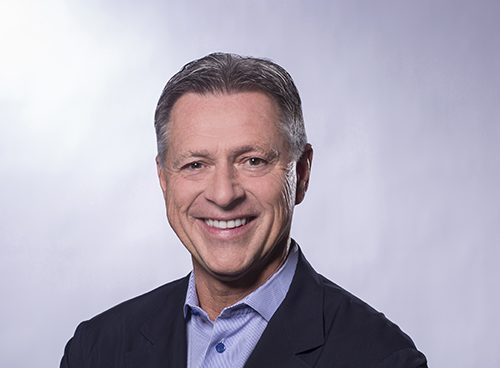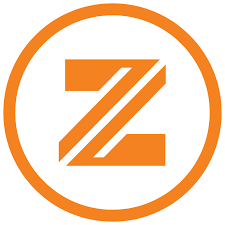When Steve Smith joined Zayo as CEO, he found himself at the head of a company that was a Frankenstein of 46 acquisitions. And while the company’s decentralized approach had served it well in the early years, Steve saw an opportunity to take the company further. This time — and almost paradoxically — through centralization.
Zayo is a communications infrastructure company that ensures its customers have the fiber bandwidth they need to achieve their missions. They are a respected team with a business model that’s not going out of style. But they hit a wall in their own development. Find out on this episode of Business X factors how Steve married their decentralized approach with a centralized one — all while still empowering the innovation and creativity that defines the company.
Main takeaways:
- Have a Plan for Centralization: If you decide to centralize the processes of a business after acquisitions or mergers, slogans like “think global, act local” or “create a lean but activist center” may sound good, but they do not provide a recipe in all circumstances. The Boston Consulting Group has identified four principles to create a value-adding corporate center. It includes careful assessment of the situations in which the center genuinely adds value and those in which it does not. Emphasizing strategy over structure; letting the business drive the center — not vice versa — and BCG advises companies to be self-critical about central capabilities. Be prepared to revisit and revise choices when circumstances change.
- Listen, Learn, Lead: When the heat is on, rally the team or troops around a common mission or a change in strategy. Don’t scare employees into working harder with threats and blame — inspire them to do battle together to succeed. Anchor the organization by focusing on what people need to do differently and lead people into thinking how they can play a role. Encourage employees to speak frankly without finger-pointing, listen to ideas on how to better collaborate and innovate and be clear you are open to two-way conversations.
- See Around Corners: Risk assessment typically exposes only the most direct threats to a company while indirect ones are neglected. McKinsey has found that while it is not easy to anticipate how risk cascades through a company or economy; executives who systematically examine the way risks propagate across the whole value chain can foresee and prepare for second-order effects more successfully. Investigate competitors, supply chains, distribution channels, customer response and the full impact of a major risk on a company and think about how your risk cascades to gain insight into what is around the corner.
Key quotes:
“This had become, over 15 years, a very decentralized distributed company. So, there were seven or eight product groups, six or seven go to market groups, six or seven delivery groups. And so, it was super fragmented, super decentralized. And the number one thing you have to do if you want to scale and grow, is you have to centralize some of those big functions.”
“This is a 15-year-old company that was built on the back of 46 acquisitions. So, this was a roll up of where they bought companies that were providing connectivity all over the major metros in the US and then they expanded into acquisitions that put them into Europe… Everybody speaks Zayo even after 46 acquisitions. A logical question, Jeremy would be how many cultures are there? They did a really, really good job integrating and synergizing the people, the assets, and the culture.”
“Because of the business model, I am worried about where’s the next set of requirements going as the world continues to get more connected and what are the products and services that we need to innovate on. It’s easier to do when it’s centralized under one leader. So, everybody’s walking in the same direction. I don’t have five different regions doing five different product developments. I’ve got one organization now, and we are really starting to pick up the pace on innovating at a higher rate.”
“We’re all about making it easier to connect. And there’s nothing faster than the speed of light. So, fiber is super unique and there’s nothing on the horizon that can disrupt fiber. Many CEOs come to work every day, worried about what technology is coming out next that could disrupt my business model… I knew that the core of the business model, the fiber that connects all these things. There’s just nothing on the horizon that’s going to disrupt the speed of light.”
“Most of the changes we made were driven on the back of customer feedback that said, listen, we love you guys. We need you in our networks, but you’ve gotten slow. You’ve gotten hard to deal with. Your quotes are slow, your pricing slow. Your responses are slow. When we have an outage, can you please go and streamline the speed, that stuff up. And quite frankly, centralization is a way to do that. Now we’ll stay in this operating model for multiple years, but it doesn’t mean we won’t tweak it as we go. You have to keep adapting.”
“We want to leverage this unique network that we’ve accumulated and it’s super unique in certain segments of it. We want to get our service excellence to a level that differentiates us against the big slow competitors. And we want to have a culture that actually differentiates us and a culture that is “think big, get stuff done for our customers and have fun doing it.”
“When you go to West Point, you’re in the military and you’re a Lieutenant, the captain, you command units, you learn a lot about discipline. I learned about how to be disciplined with people and, and ideas. I learned a very critical thing that I use today. I call it the three L’s: I, listen, I learn, and then I lead. Listen, learn, and then lead.”
—
Business X factors is produced by Mission.org and brought to you by Hyland.
For over a decade, Hyland has been named a Leader in the Gartner Magic Quadrant for Content Services Platforms, leading the way to help people get the information they need when and where they need it. More than half of 2019 Fortune 100 companies rely on Hyland to help them create more meaningful connections with the people they serve. When your focus is on the people you serve, Hyland stands behind you. Hyland is your X factor for better performance. Go to Hyland.com/insights to learn more.




